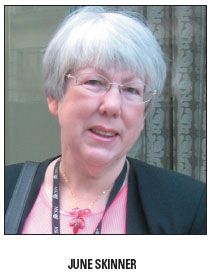An editor says farewell
After 17 years, I am stepping down as editor of Oncology News International to enjoy a long-awaited retirement. When ONI was first introduced back in 1991, it represented a new concept in cancer news publications-rather than simply summarizing journal articles, we actually attended meetings all over the country and reported the results of major presentations.

After 17 years, I am stepping down as editor of Oncology News International to enjoy a long-awaited retirement. When ONI was first introduced back in 1991, it represented a new concept in cancer news publications-rather than simply summarizing journal articles, we actually attended meetings all over the country and reported the results of major presentations. This was before such information was available instantaneously on the Internet (yes, younger readers, there was such a time).
In 2008, ONI is still reporting the news, but we’ve added new features not easily found online, including our well-received Masters of Hematology/Oncology series, our monthly Point/Counterpoint debates, extensively researched feature articles, columns on the economics of oncology practice, and, of course, expert commentaries in our popular Vantage Points.
So, what was the oncology landscape like back in 1991? I still remember the first oncology meeting I attended-the subject was the new and exciting concept of high-dose chemotherapy/bone marrow transplant for patients with advanced breast cancer. Well, we all know how that turned out, but dozens of more promising innovations were just on the horizon: the taxanes; rituximab (Rituxan), the first monoclonal antibody (with so many other “mabs” to come); imatinib (Gleevec), the first of the “nibs”; as well as advancements in radiation oncology, surgery, and imaging.
Sometimes my friends would ask how I could bear to work in such a depressing field as cancer. I would explain to them the excitement I felt as I tried to wrap my brain around such concepts as antiangiogensis and cancer pathway inhibition-and, most important, the great pleasure I took in working with so many brilliant and compassionate oncologists.
Now I pass the editorial torch to ONI’s new editor, Shalmali Pal. I’ll still be around helping in the transition, and hopefully you will still see my byline on articles in ONI. But for now, I’m off to Hawaii on vacation, and I’m not taking a computer.